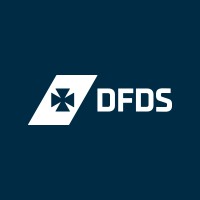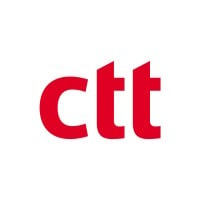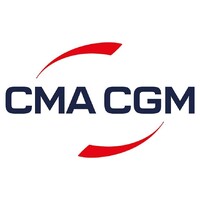
PT Pos Indonesia (Persero) Company Cyber Security Posture
posindonesia.co.idPos Indonesia is an Indonesian state-owned company (BUMN) engaged in postal services. Pos Indonesia was appointed by the government to be the national logistics platform for its wide and comprehensive network that spreads throughout Indonesia. Pos Indonesia was established in Jakarta on August 26, 1746. Since its establishment, Pos Indonesia has undergone many changes in name, status, and function before finally becoming PT Pos Indonesia in 1995. In this year, Pos Indonesia also developed its business model from mail delivery service to freight forwarding and logistics service. There are at least 4,800 online post offices with 58,700 points of sales in the form of post offices, Agen Pos, Mobile Postal Service, and others. Pos Indonesia has a dedicated network, reliable distribution system, track and trace system, excellent service, speed, accuracy, and competitive prices. Pos Indonesia has postal services (retail services) in the form of mail and package delivery services. This service includes domestic and international shipping. For domestic shipping, Pos Indonesia provides Q9 Sameday Service, Pos Express, and Pos Kilat Khusus. As for international shipping, Pos Indonesia provides QIX, EMS, Pos Ekspor, and Paket Pos Cepat Internasional. In addition, Pos Indonesia also provides e-commerce financial services through the Pospay and QPOSin AJA applications. For international financial services, Pos Indonesia provides Wesel Pos service. Pos Indonesia also sells postal items such as seals, stamps, philatelic products, and others.
PPI( Company Details
pt-pos-indonesia-persero
10,001+ employees
0
none
Transportation, Logistics, Supply Chain and Storage
posindonesia.co.id
Scan still pending
PT _1631637
In-progress
Between 200 and 800
This score is AI-generated and less favored by cyber insurers, who prefer the TPRM score.
 PPI( Global Score
PPI( Global Score.png)

PT Pos Indonesia (Persero) Company Scoring based on AI Models
| Model Name | Date | Description | Current Score Difference | Score |
|---|---|---|---|---|
| AVERAGE-Industry | 03-12-2025 | This score represents the average cybersecurity rating of companies already scanned within the same industry. It provides a benchmark to compare an individual company's security posture against its industry peers. | N/A | Between 200 and 800 |
PT Pos Indonesia (Persero) Company Cyber Security News & History
| Entity | Type | Severity | Impact | Seen | Url ID | Details | View |
|---|
PT Pos Indonesia (Persero) Company Subsidiaries

Pos Indonesia is an Indonesian state-owned company (BUMN) engaged in postal services. Pos Indonesia was appointed by the government to be the national logistics platform for its wide and comprehensive network that spreads throughout Indonesia. Pos Indonesia was established in Jakarta on August 26, 1746. Since its establishment, Pos Indonesia has undergone many changes in name, status, and function before finally becoming PT Pos Indonesia in 1995. In this year, Pos Indonesia also developed its business model from mail delivery service to freight forwarding and logistics service. There are at least 4,800 online post offices with 58,700 points of sales in the form of post offices, Agen Pos, Mobile Postal Service, and others. Pos Indonesia has a dedicated network, reliable distribution system, track and trace system, excellent service, speed, accuracy, and competitive prices. Pos Indonesia has postal services (retail services) in the form of mail and package delivery services. This service includes domestic and international shipping. For domestic shipping, Pos Indonesia provides Q9 Sameday Service, Pos Express, and Pos Kilat Khusus. As for international shipping, Pos Indonesia provides QIX, EMS, Pos Ekspor, and Paket Pos Cepat Internasional. In addition, Pos Indonesia also provides e-commerce financial services through the Pospay and QPOSin AJA applications. For international financial services, Pos Indonesia provides Wesel Pos service. Pos Indonesia also sells postal items such as seals, stamps, philatelic products, and others.
Access Data Using Our API

Get company history
.png)
PPI( Cyber Security News
Bank BTN focuses Capex on IT security
State-owned lender PT Bank Tabungan Negara Tbk (BTN) will increase its Capital expenditure (Capex) in 2023 by 18% to strengthen its information ...

PPI( Similar Companies

Aras Kargo
1979 yılında Celal Aras tarafından kurulan Aras Dağıtım ve Pazarlama, eriştiği dağıtım ağı gücüyle, bu gücün taşımacılıkta da kullanılması kararı alınarak 1989'da faaliyete geçen Aras Kargo'nun da temellerini oluşturmuştur. Kuruluşundan itibaren sektöre getirdiği yeniliklerle hizmet kalitesini geliş

DFDS LOGISTICS NL
DFDS is ontstaan in 1866 toen 4 Deense stoomschipbedrijven samengevoegd werden tot Det Forenede Dampskibs-Selskab. Door de oprichting van DFDS werd het eenvoudiger om op internationaal niveau handel met elkaar te bedrijven. Dit zorgde ervoor dat ondernemers in alle soorten en maten (economisch) kond

A.P. Moller - Maersk
A.P. Moller - Maersk is an integrated transport and logistics company; going all the way, together, for our customers and society. ALL THE WAY is our commitment to connect the world so that everyone has both the possibility and the ability to trade, grow and thrive. The company employs roughly 110.0

Delhivery
#WeGoTheExtraMile | We are India’s largest fully integrated logistics provider, simplifying commerce with cutting-edge technology, world-class infrastructure, and unmatched expertise to deliver seamless supply chain solutions for businesses of all sizes. Comprehensive Solutions for Every Need ➡️E

CTT - Correios de Portugal
Os CTT assumem-se como uma empresa orientada para o cliente, com uma oferta segmentada para empresas e particulares, com soluções que começam no envio de correio e expresso (encomendas), que passam pelas melhores ofertas de poupanças e por um portefólio alargado de produtos e serviços empresariais,

CMA CGM
The CMA CGM Group is a global player in sea, land, air and logistics solutions. Present in 160 countries, it employs 160,000 people, of which nearly 6,000 in Marseille where its head office is located. The world's 3rd largest shipping company, CMA CGM serves more than 420 ports across 5 continents

Frequently Asked Questions
Explore insights on cybersecurity incidents, risk posture, and Rankiteo's assessments.
PPI( CyberSecurity History Information
How many cyber incidents has PPI( faced?
Total Incidents: According to Rankiteo, PPI( has faced 0 incidents in the past.
What types of cybersecurity incidents have occurred at PPI(?
Incident Types: The types of cybersecurity incidents that have occurred include .
Incident Details
What are the most common types of attacks the company has faced?
Additional Questions
What Do We Measure?
















Every week, Rankiteo analyzes billions of signals to give organizations a sharper, faster view of emerging risks. With deeper, more actionable intelligence at their fingertips, security teams can outpace threat actors, respond instantly to Zero-Day attacks, and dramatically shrink their risk exposure window.
These are some of the factors we use to calculate the overall score:
Identify exposed access points, detect misconfigured SSL certificates, and uncover vulnerabilities across the network infrastructure.
Gain visibility into the software components used within an organization to detect vulnerabilities, manage risk, and ensure supply chain security.
Monitor and manage all IT assets and their configurations to ensure accurate, real-time visibility across the company's technology environment.
Leverage real-time insights on active threats, malware campaigns, and emerging vulnerabilities to proactively defend against evolving cyberattacks.




